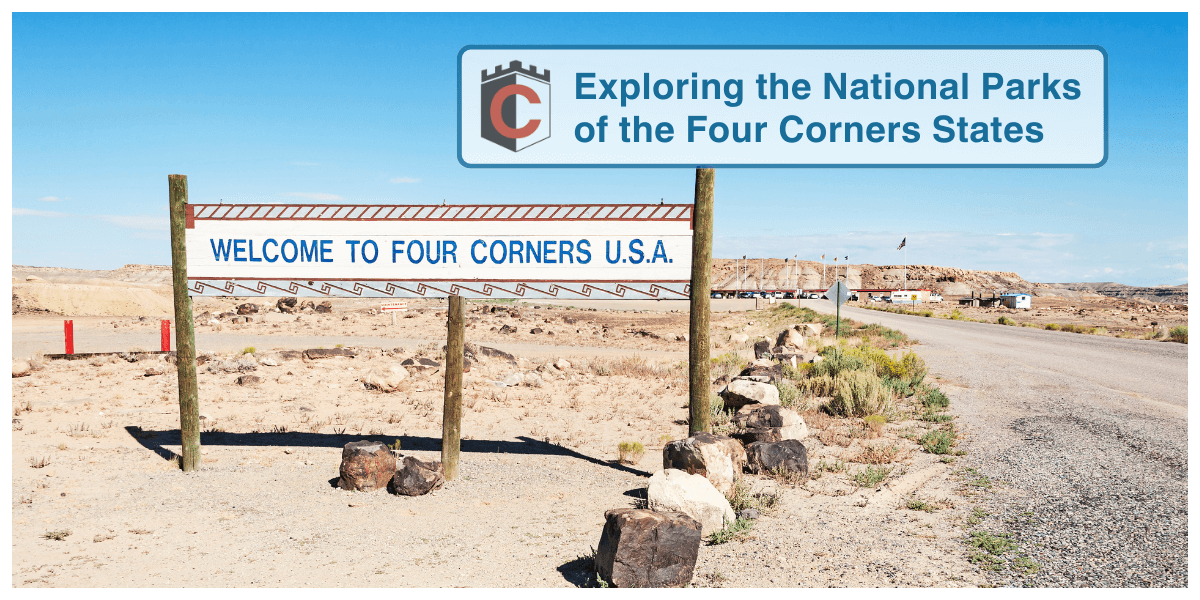If an American Southwest road trip isn’t on your 2024 travel list, it should be! A visit to any of the national parks in the Four Corners region of the United States is like stepping into a living postcard. The intersection of Arizona, Colorado, New Mexico, and Utah hosts a mesmerizing mix of red rocks, canyons, ancient landscapes, and dark skies.
In this blog, we’ll explore the national parks that make this region a bucket-list destination, each revealing its unique charm and leaving you in awe of the great outdoors.
Arizona
Grand Canyon National Park
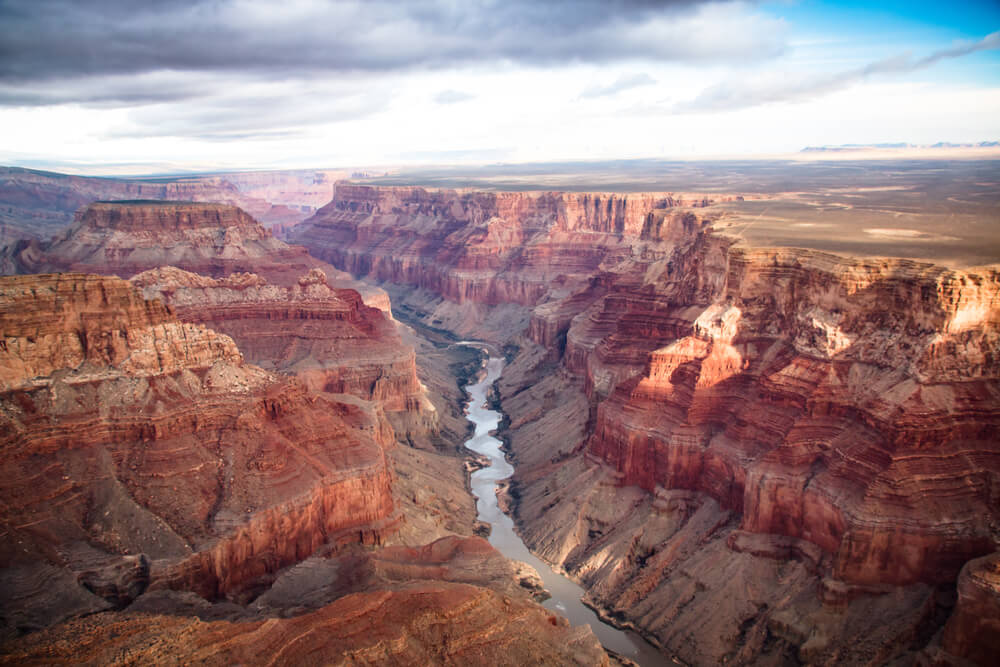
Northern Arizona is home to one of the biggest attractions for U.S. travelers- The Grand Canyon. This geological masterpiece carved by the Colorado River draws 6 million visitors a year. The colorful landscapes offer many adventurous activities as well as opportunities to learn about the 11 associated tribes of the land and the geology of the national park.
The South Rim is open year-round with hiking trails from easy and accessible to steep and rigorous, as well as paved and unpaved cycling opportunities. The bustling Grand Canyon Village has the historic district, markets, dining, and lodging. Join a park ranger for a guided rim walk or events and discussions about geology, wildlife, history, Grand Canyon trails, and astronomy. Head to the eastern entrance for the unique views of the Desert View Watchtower, the national historic landmark of the park.
If you’re up for a quieter experience, the North Rim offers a more secluded perspective, a moment of peaceful reflection in one of the world’s most iconic landscapes.
Colorado
Mesa Verde National Park
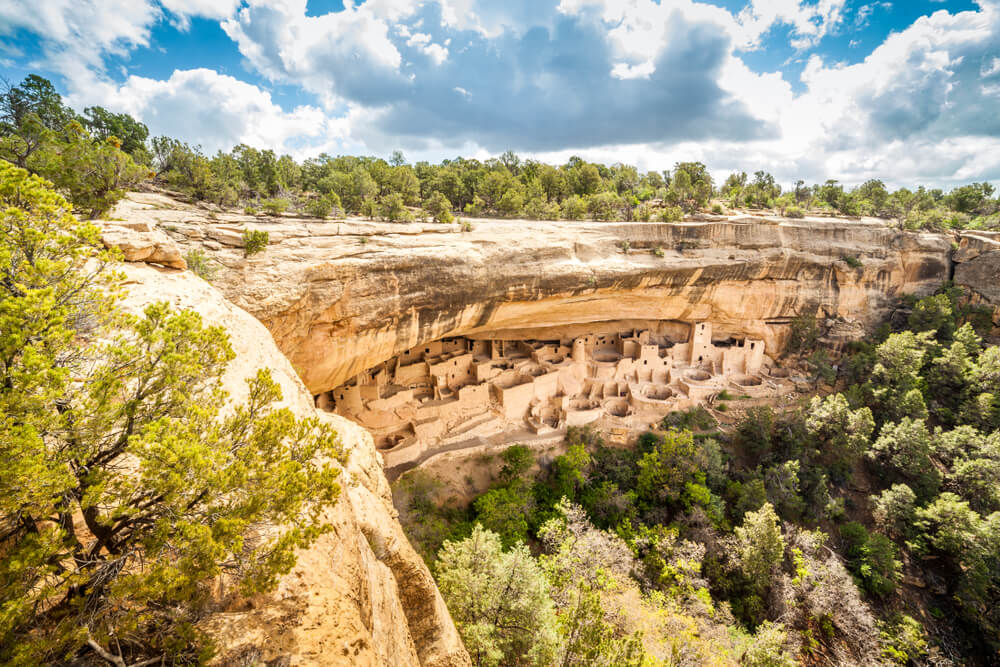
Mesa Verde National Park is a UNESCO World Heritage Site in the far southwest corner of Colorado. This archeological site is a fascinating blend of history and natural beauty, with 30 miles of trails and wildlife species that can’t be found anywhere else in the world. The ancestral Puebloan cliff dwellings give us a glimpse into the lives of people who made these cliffs their home over 700 years ago. The engineering marvel of these structures, combined with the stunning views, is a journey back in time.
Mesa Verde isn’t just about the past; it’s a living connection to the region’s cultural heritage. Ranger-led programs and cultural demonstrations bring the traditions and stories of the Pueblo people to life. Walking through the well-preserved ruins connects visitors to the history etched into the sandstone walls.
New Mexico
White Sands National Park
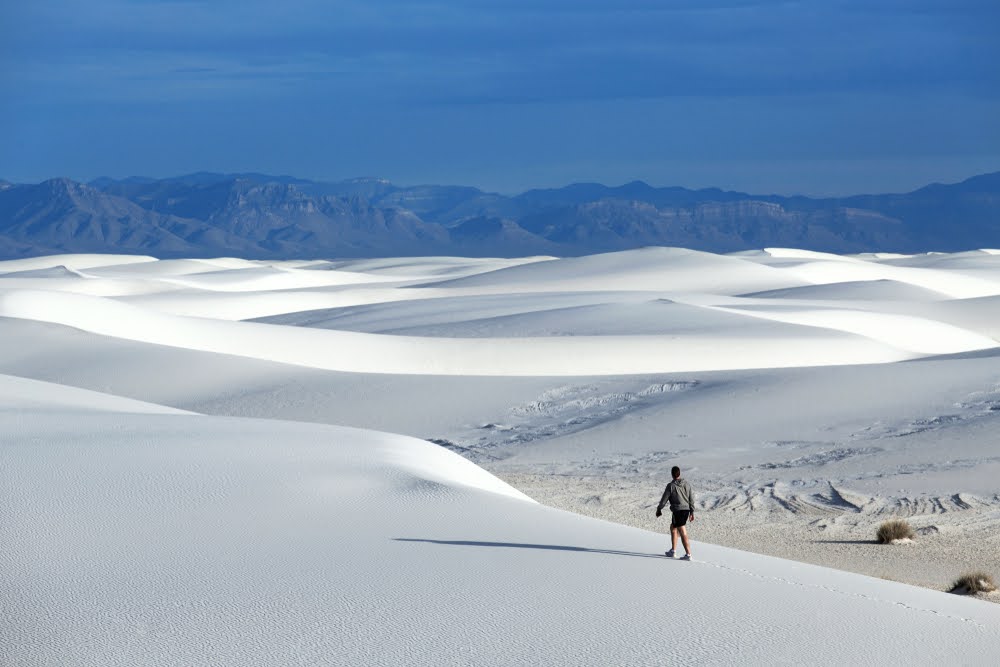
For a departure from familiar southwestern landscapes, a visit to White Sands National Park is a must! Rolling hills of white sand surround you in “great wave-like dunes of gypsum sand” in what is the world’s largest gypsum dune field, according to the National Park Service. The ecosystem is complex, home to many flora and fauna, including the Purple Prickly Pear, Merriam’s Kangaroo Rat, and the Black-tailed Jackrabbit.
The region, known as the Tularosa Basin, is a significant part of history, having attracted humans for over 10,000 years. Passing along these stories and historical facts, the park leads educational programs for school children. There is even a desert oasis, depending on the time of year, thanks to the unique geological qualities of the land. Water gathers in the basin from the surrounding mountains and, with nowhere else to go, sits just below the surface, filling in “playas.” White Sands National Park is a must-visit for anyone passing through New Mexico.
Utah
Arches National Park
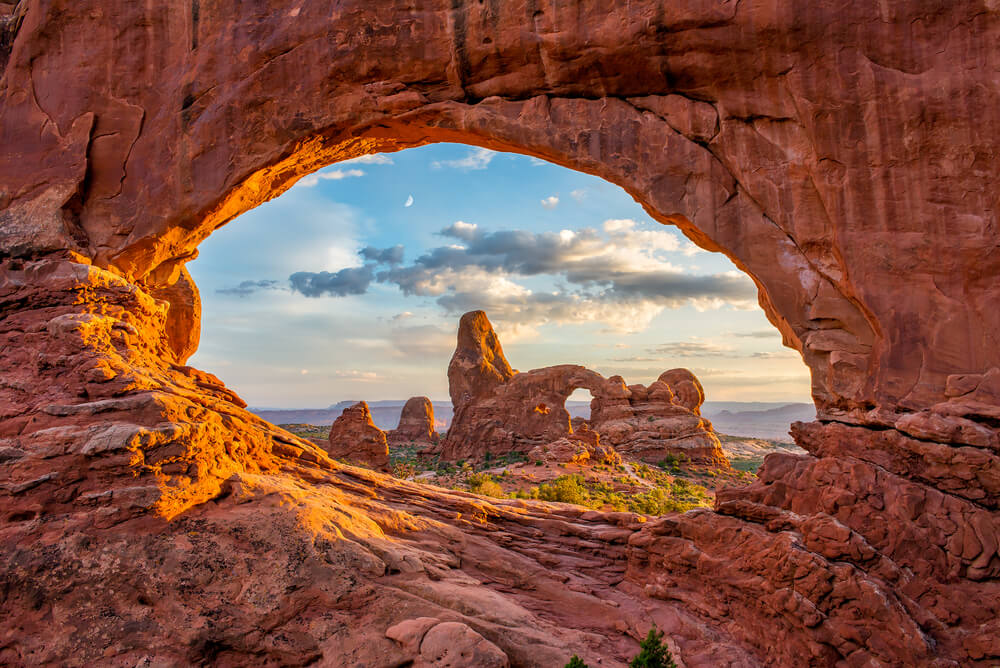
Arches National Park, just 5 miles north of Moab, is a show-stealing stop on any road trip! It’s a natural sculpture garden with over 2,000 stone arches, each more fascinating than the last. Landscape Arch stretches an incredible 306 feet, and Delicate Arch glows against the sky during sunrise.
But Arches is not just about arches. The landscape is a mix of towering red rocks, balanced rocks that defy gravity, pinnacles, and carved canyons. See them all while you drive, hike, bike, or even ride on horseback. Get up close on a rock climbing route! And if you’re up for a bigger adventure, the Fiery Furnace is a maze of canyons with ranger-led tours to guide you through the labyrinth. Camp at Devil’s Garden for a breathtaking night under the stars.
Bryce Canyon National Park
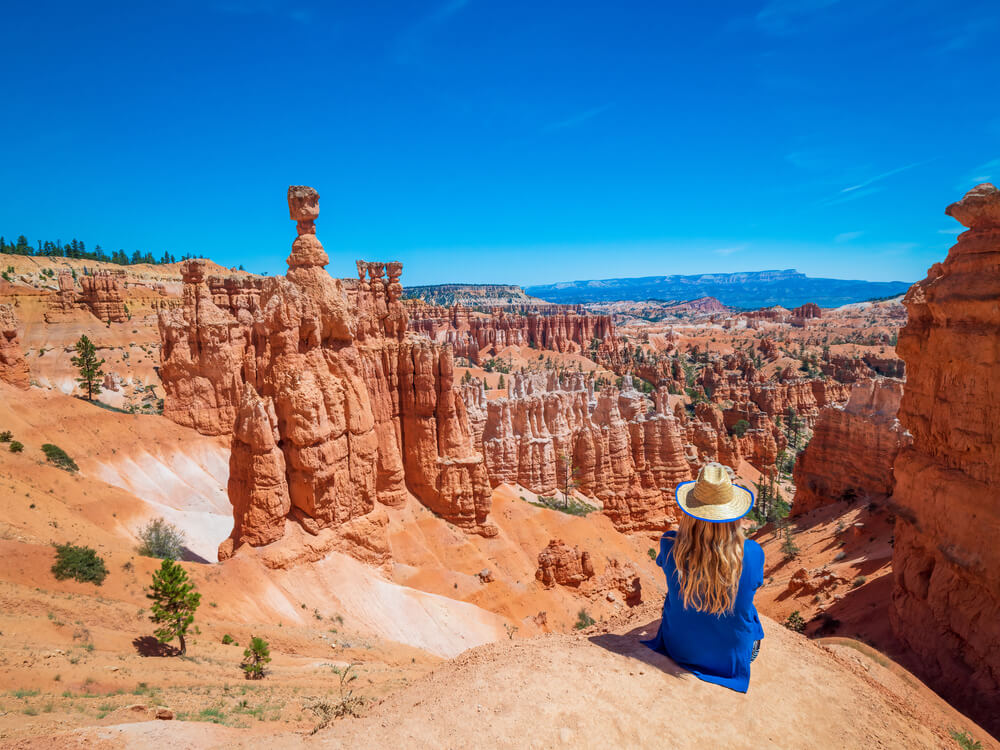
Head to Bryce Canyon National Park in southern Utah to see the largest concentration of irregular rock spires (called hoodoos) on Earth. Get easy access to Bryce Amphitheatre viewpoints from the road or a leisurely hike on the Rim Trail. Take one of the more adventurous trails into the bowl for an up-close view of the unreal splendor of the rocks! Bryce Canyon also has 175 documented species of birds that either migrate through or live there seasonally and year-round. RV and tent camping will give you an incredible celestial show.
Canyonlands National Park
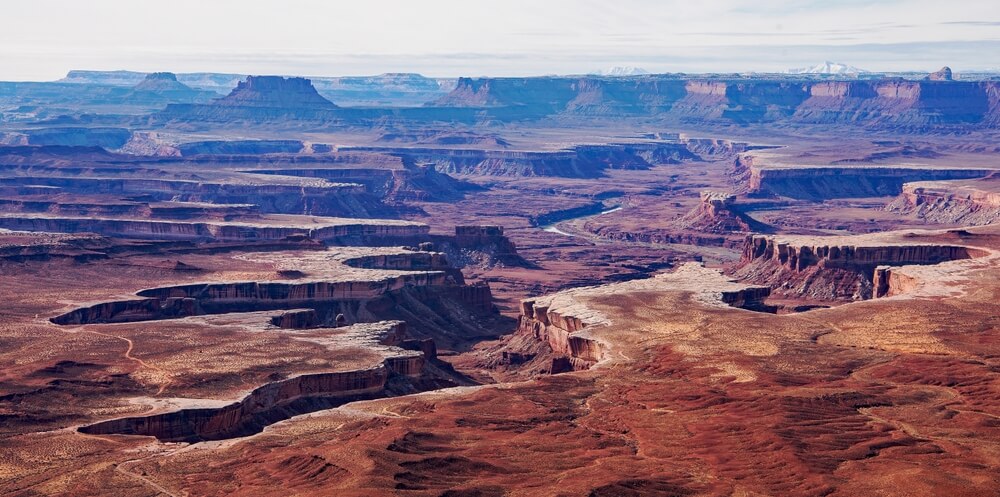
Canyonlands National Park is home to a vast expanse of canyons, mesas, and buttes shaped by the Colorado River. Divided into districts, each with its own character, Canyonlands offers a diverse range of landscapes to explore.
The Island in the Sky district gives you a panoramic view of canyons stretching as far as the eye can see. The White Rim Road, a challenging route, takes you through a winding path of mesas and canyons, giving you an up-close encounter of the rugged beauty of Canyonlands. The Needles district, with its towering rock spires, offers a more remote and secluded experience, complete with petroglyphs and pictographs left behind by the many Indigenous tribes who lived on and passed through this land over the past 10,000 years.
Descending into the Maze District is a journey into one of the most challenging terrains in the United States. It requires careful planning, but the rewards – isolated vistas, hidden arches, and a sense of untouched wilderness – are worth every step. The Rivers is the place to go for whitewater adventures. Camp at Island in the Sky and The Needles for the ultimate stargazing night.
Capitol Reef National Park
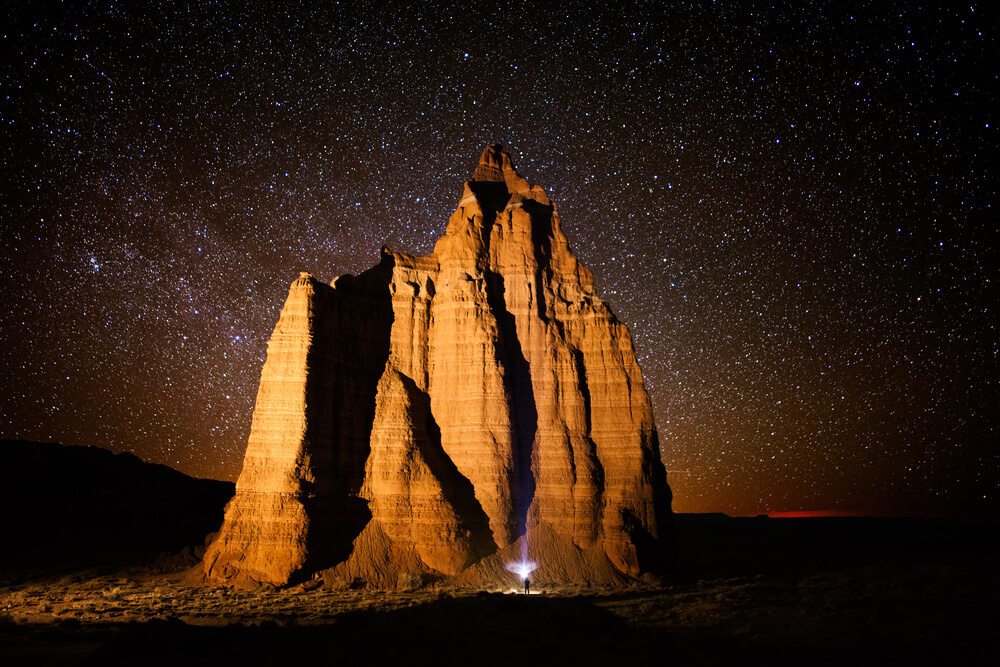
Near the small town of Torrey is Capitol Reef National Park, an expansive park that is home to a 100-mile-long wrinkle in the earth. The Waterpocket Fold hosts sandstone domes and rocky cliffs along its lifted monocline. The Cathedral Valley District in the north part of the park is a very rugged desert of monoliths with no paved roads and varying weather conditions.
The park is a dream for hikers, campers, and anyone craving solitude in nature. For a haunting look into the pioneer past, visit Fruita, the historic settlement now considered a ghost town, and camp out for an otherworldly overnight experience.
Happy Camping!
The Four Corners region isn’t just a destination. It’s a celebration of nature’s beauty and the thrill of exploration. Whether you’re standing on the rim of a canyon, hiking through ancient ruins, or gazing at a starlit sky, the journey through these national parks is one you won’t soon forget.
Visit the Castle RV Storage blog for all the best Four Corners camping, travel, and RVing tips. Follow us on Facebook and Instagram to stay connected and share our love of the RV travel life!

